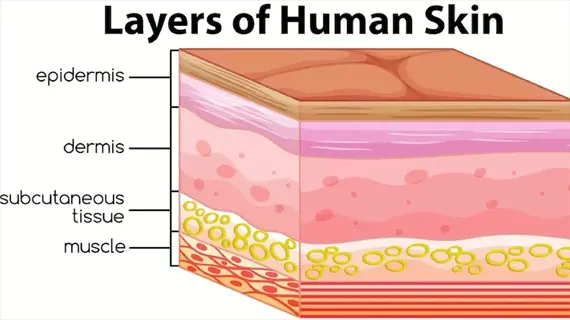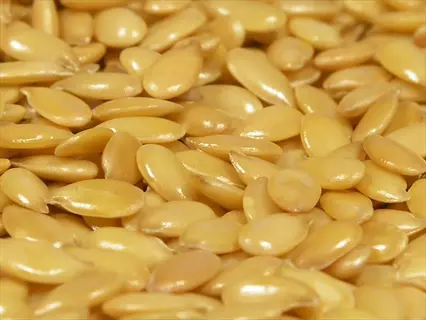Essential Fatty Acids: Complete Overview

Written by
Natalie Hamilton
Reviewed by
Prof. Benjamin Murphy, Ph.D.Essential fatty acids must be obtained through diet since humans cannot synthesize them internally.
Maintain a 1:4 omega-3 to omega-6 ratio to prevent chronic inflammation and disease.
DHA constitutes 50% of brain phospholipids, making it critical for neurological development.
Plant-based ALA converts poorly to EPA/DHA; prioritize marine sources for active forms.
Deficiency manifests through dry skin, poor concentration, and compromised immune responses.
Daily requirements vary significantly across life stages from infants to elderly.
Article Navigation
Your body requires essential fatty acids, which are fats necessary to your health that it cannot produce. Therefore, it is vital to incorporate them into your diet. The two essential fatty acids are omega-3 alpha-linolenic acid (ALA) and omega-6 linoleic acid (LA). These fats are not optional. They are critical to your cellular health.
Humans lack the specific enzymes associated with Δ12 desaturases and Δ15 desaturases. This biological defect necessitates that we obtain our fatty acids from food. If the proper fatty acids are not available, the body does not build strong cell membranes. The outward effects may initially be skin problems or fatigue.
These fats aren't only essential for basic structure, but they also serve critical functions. They control signals of inflammation in the body. They help with the development of brain tissue. I have watched clients remedy their chronic dryness by emphasizing these nutrients. Your joints and heart count on this balance every day.
Types and Biochemical Structure
Omega-3 and omega-6 fatty acids are different due to the position of the first double bond on the carbon chain. Omega-3 acids begin at the third carbon, omega-6 at the sixth carbon. This small change causes differences in the way the body uses the acids. There are three forms of omega-3: ALA, which comes from plant sources, EPA, which is found in fish and some marine life, and DHA, derived from marine life. Omega-6 has forms of LA, which is found in seeds, GLA, which is found in oils, and AA, which can only be found in animal sources.
Their names also indicate structure. DHA is called 22:6, because there are 22 carbons and 6 double bonds. AA has the name 20:4. These double bonds are in cis configuration and cause kinks in the fatty acid chains. The kink in the chains does not allow the fatty acids to pack tightly in the membranes of the cells. The cell membranes remain flexible so that nutrients can move about freely. Stiff membranes would tend to slow things down.
My personal diet emphasizes fluid membranes sufficiently; for the right fats make the cells responsive to stimuli. One may think of stiff hinges and oily ones. The three bends in EPA make for greater flexibility than the two seen in LA. Fluids influence the receptors of insulin and the signals of the brain from cell to cell. One should use only fats that keep the cell machinery in operational condition without being clogged through the use of rigid types.
Naming Conventions
- Carbon Chain Notation: Fatty acids named by carbon count and double bonds (e.g., ALA is 18:3 meaning 18 carbons, 3 double bonds)
- Omega Numbering: Position of first double bond from methyl end (omega-3 has first bond at carbon 3)
Bond Configuration
- Cis Bonds: Natural double bonds create 30-degree kinks in hydrocarbon chains
- Membrane Fluidity: Kinks prevent tight packing, increasing membrane flexibility and permeability
Chain Length Impact
- Short-chain (SC-PUFA): 18-carbon chains like ALA and LA are precursors
- Long-chain (LC-PUFA): 20+ carbon chains like EPA/DHA are biologically active forms
Hydrophobic Properties
- Carboxyl Group: Polar head interacts with water at membrane surfaces
- Hydrocarbon Tail: Non-polar section creates lipid bilayer interior
Structural Comparisons
- Omega-3 vs. Omega-6: Differ in double bond positioning (carbon 3 vs 6)
- DHA Specificity: Six double bonds create extreme curvature for neural membrane embedding
Key Biological Functions
Half of the neural membranes in the brain consist of DHA. The high concentration ensures an efficient signal is sent between nerve cells. Not enough DHA can harm your memory and learning capabilities. This is a situation I have observed with patients who have increased their DHA intake by consuming fatty fish.
EPA and AA have contrary inflammatory effects. EPA has anti-inflammatory effects through resolvins. AA has pro-inflammatory effects through prostaglandins. This fine balance regulates inflammation after injury. When too much AA comes from processed foods, there is chronic inflammation. When this system is out of balance, joint pain occurs.
Cell membrane fluidity has a direct effect on the action of the insulin receptor.Omega-3 fatty acids maintain the cell membranes in a state of flexibility such that insulin can bind properly to the cell. When cell membranes are rendered stiff by the use of inappropriate fats, insulin resistance will occur. This is why I evaluate the status of membranes in my diabetic patients.
Resolvins promote the resolution of inflammation instead of its suppression; these derivatives of eicosapentaenoic acid signal immune cells to stop attacking. Resolvins resolve the removal of cellular debris from damaged tissues. In the absence of sufficient resolvins, inflammation tends to persist in a chronic state. This hinders the body's complete recuperation through chemical processes that have yet to be elucidated.
Cell Membrane Integrity
- DHA Concentration: Constitutes 50% of neuronal phospholipids for signal transmission efficiency
- Fluidity Impact: Cis double bonds maintain membrane flexibility for nutrient transport
Eicosanoid Synthesis
- EPA Derivatives: Resolvins and protectins actively resolve inflammation post-injury
- AA Derivatives: Prostaglandins and leukotrienes initiate acute inflammatory responses
Gene Expression Regulation
- PPARα Activation: Upregulates fatty acid oxidation genes in liver and muscle
- SREBP-1 Suppression: Inhibits cholesterol synthesis pathways
Neural Signaling
- Neurotransmitter Release: DHA enhances acetylcholine secretion for memory formation
- BDNF Production: Omega-3s increase brain-derived neurotrophic factor for neurogenesis
Metabolic Functions
- Insulin Sensitivity: Membrane DHA improves insulin receptor signaling efficiency
- Mitochondrial Support: EPA optimizes electron transport chain efficiency in energy production

Docosahexaenoic Acid (DHA)
- Neural Membranes: 50% structural component of brain gray matter lipids
- Vision Support: Critical for rhodopsin regeneration in retinal photoreceptors
- Synaptic Plasticity: Enhances neurotransmitter release for learning and memory

Eicosapentaenoic Acid (EPA)
- Inflammation Control: Precursor to resolvins that terminate inflammatory responses
- Triglyceride Reduction: Lowers hepatic VLDL synthesis by 25-30%
- Cardiac Stability: Modulates ion channels to prevent arrhythmias

Arachidonic Acid (AA)
- Immune Activation: Forms prostaglandins that initiate fever and swelling
- Skin Barrier: Precursor to ceramides for epidermal water retention
- Neurotransmission: Modulates endocannabinoid receptors for pain signaling

Alpha-Linolenic Acid (ALA)
- Precursor Role: Converted to EPA/DHA at 5-10% efficiency in humans
- Membrane Fluidity: Integrates into phospholipid bilayers as SC-PUFA
- Antioxidant Synergy: Partners with vitamin E to prevent lipid peroxidation

Linoleic Acid (LA)
- Barrier Function: Essential for acylceramide synthesis in stratum corneum
- Precursor Role: Converted to GLA and AA for eicosanoid production
- Cholesterol Transport: Facilitates LDL receptor-mediated cholesterol clearance
Dietary Sources and Requirements
Boat and Planet sources like flaxseeds, 2.3g ALA per tablespoon; chia seeds, 5g ALA per ounce, animal sources provide EPA /DHA directly. Atlantic salmon provides 600mg of EPA and 1,200mg of DHA per 3-oz serving. Algal oil should be considered as a source of active DHA for vegans, as the conversion of plant-based oils to DHA is less than 10%.
Nutritional needs vary with life stage. To be healthy, mature men require 1.6g ALA and 17g LA. Pregnant women require a minimum of 250mg of DHA for fetal brain development. Elderly men and women need a minimum of 1g of EPA each to help slow down cognitive decline. Athletes need higher anti-inflammatory intake than couch potatoes.
Vegans should utilize flaxseeds (2.5 grams of ALA per ounce), combined with DHA algal supplements (250 micrograms encapsulated). They should also supply walnuts for omega-6 balance. Food sources of vitamin E, such as almonds, should always be utilized to prevent some oxidative damage to these delicate fats.
Vitamin E protects important fatty acids from rancidity in your body. Sunflower seeds and spinach provide it. Without it, oxidized fats can produce inflammation. I have seen the skin health benefits that occur when clients combine omega-rich foods with sources of vitamin E.
Adults (19-50 years)
- ALA: 1.6 g/day for men; 1.1 g/day for women
- LA: 17 g/day for men; 12 g/day for women
- EPA+DHA: No RDA established; 250-500 mg recommended
Pregnant/Lactating Women
- DHA: Minimum 250 mg/day for fetal neurodevelopment
- Total Omega-3: Increase ALA intake by 0.5 g/day
- Special Note: Breast milk provides 0.32% DHA
Infants (0-12 months)
- Formula Requirement: 0.32% DHA of total fatty acids
- ALA: 0.5 g/day from breast milk or fortified formula
- LA: 4.6 g/day for proper growth and development
Elderly (65+ years)
- EPA Focus: 1 g/day shown to slow cognitive decline
- DHA: 250 mg/day minimum for retinal maintenance
- Note: Reduced conversion efficiency requires higher intake
Vegetarians/Vegans
- ALA Focus: Increase to 2.5-3 g/day to offset low conversion
- Algal DHA: 200-300 mg/day supplements recommended
- LA Sources: Prioritize unrefined oils like hemp and pumpkin seed
Omega-3 vs. Omega-6 Balance
Ideally, the omega-3 to omega-6 ratio should be somewhere between 1:1 and 1:4. Today, the average ratio is approximately 1 to 20 due to the highly refined food products we consume. This leads to chronic inflammation. Your ancestors ate a relatively good balance of omega-3 and omega-6 from their whole foods. We have upset this balance by using highly refined industrial oils.
Competitive inhibition occurs because ALA and LA share enzymes like D6 desaturase. When you eat a lot of soybean oil, it floods your body with LA. The conversion of ALA to EPA is inhibited by 40-50%. Your body is unable to produce anti-inflammatory fats effectively in this metabolic traffic jam.
The major sources of imbalances include corn oil (46 : 1), grain-fed beef (7:1), and fast food meals (>50:1 omega-6). These dominate the modern diet. I recommend that clients read the ingredient labels for soybean oil or safflower oil. These are silent disruptors.
Obtain balance first through the elimination of processed snacks. Replace them with wild salmon (0.05:1) and walnuts (4.2:1). Use olive oil, not vegetable oil. Take algae supplements if vegan. I have helped patients reduce their joint pain in this fashion in 6 weeks.
Ideal Physiological Ratio
- Evolutionary Standard: 1:1 to 1:4 (omega-3:omega-6)
- Functional Benefit: Supports balanced eicosanoid production
- Modern Deviation: Average Western diet 1:20 ratio
Competitive Inhibition Mechanism
- Shared Enzymes: Δ-6 desaturase converts both ALA and LA
- High LA Impact: Reduces ALA→EPA conversion by 40-50%
- Solution Priority: Increase EPA/DHA intake directly
Inflammation Consequences
- Omega-6 Dominance: Promotes AA→pro-inflammatory eicosanoids
- Chronic Effects: Linked to vascular and autoimmune conditions
- Countermeasure: EPA-derived resolvins resolve inflammation
Primary Imbalance Sources
- Processed Oils: Soybean/corn oil in snacks (LA:ALA >50:1)
- Grain-Fed Meats: Higher AA than grass-fed alternatives
- Fast Foods: Average meal provides 10g omega-6, <0.5g omega-3
Restoration Strategies
- Reduce: Commercial baked goods, fried foods, margarine
- Increase: Fatty fish (2x/week), flaxseed, walnuts
- Supplement: Algal DHA for vegans; fish oil for others
Deficiency and Special Populations
Deficiency symptoms manifest in many systems. Scaly dermatitis develops due to impaired ceramide synthesis. Poor wound healing indicates abnormality in immune rejection. Night vision loss indicates DHA retinal deficiency. I have treated patients with persistent eruptions that resolved after omega-3 supplementation.
DHA at 0.32% of total fatty acids is needed for brain development in infants. Breast milk naturally contains it. Formula-fed babies must get it through the output that adds it. I emphasize this with new parents because insufficient DHA has been linked to lower IQ scores later in life.
Older adults require 1g EPA per day for effective reduction of cognitive decline. The efficiency of conversion from parents decreases as we age. In addition, the retina requires at least 250mg per day of DHA. For clients over the age of 65, I recommend consuming at least two servings of fatty fish per week, along with supplementation.
Topical sunflower oil repairs skin deficient in omega fatty acids. It should be applied twice a day to restore the barrier. The high linoleic acid (LA) content helps repair scaling in the skin within a matter of weeks. Combine with the intake of omega-3 fatty acids for a comprehensive restoration of skin health. The dual approach has yielded dramatic improvements.
Skin Manifestations
- Primary Symptom: Scaly dermatitis due to impaired ceramide synthesis
- Repair Method: Topical application of sunflower oil (high LA) twice daily
- Timeframe: Visible improvement within 2 weeks of consistent use
Neurological Impacts
- Infant Risk: Reduced IQ scores with DHA-deficient formula
- Adult Risk: Memory impairment and reduced learning capacity
- Intervention: Increase DHA to 250 mg (0.25g)/day via fish or algae
Immune Dysfunction
- Symptom: Frequent infections and poor wound healing
- Mechanism: Imbalanced eicosanoid production from AA dominance
- Correction: Achieve 1:4 omega-3:omega-6 ratio through dietary adjustment
Visual Impairment
- Symptom: Reduced dark adaptation and visual acuity
- Cause: DHA deficiency in retinal photoreceptors
- Treatment: 500 mg (0.5g) DHA/day for 3 months minimum
Metabolic Consequences
- Insulin Resistance: Linked to low membrane EPA/DHA content
- Repair: Consume 1g (1000mg) EPA daily for 12 weeks to improve sensitivity
- Monitoring: Track omega-3 index (target >8%) via blood test
5 Common Myths
All dietary fats are harmful, and for ideal health and body weight they must be eliminated from the diet.
Essential fatty acids, like omega-3 and omega-6, are essential for cellular function, hormone production and nutrient absorption, their elimination causing membrane dysfunction, developmental impairment of the nervous system and chronic inflammation. Unlike saturate fats, as unsaturated fats they have the property of reducing the risk of cardiovascular diseases when consumed in proper proportions; their elimination causes these diseases.
Plant-based omega-3 sources like flaxseed produce the same benefits as marine sources like salmon or fish oil supplements.
The human conversion of the available alpha-linolenic acid (ALA) found in plants to useful active EPA/DHA is less than 10% efficient because of limitations of enzymatic systems. Serious neurological and anti-inflammatory requirements necessitate supplementation of direct marine sources. Reaching therapeutic levels of DHA can only be accomplished with algal or fatty fish, while reliance on flaxseed as the only source will keep the vital DHA-dependent systems malnourished.
Omega-6 fatty acids in excess actively create dangerous inflammation and should be minimized in any diet, regardless of the context.
Linoleic acid (omega-6) is essential for skin barrier integrity and cholesterol metabolism; only excessive intake of processed omega-6 oils interferes with the omega-3:omega-6 ratio. Natural sources of omega-6 (nuts, seeds) are health-promoting while hydrogenated omega-6 fat does not have this effect and creates an inflammatory cascade in the body when consumed upside down (excessively) relative to the omega-3 intake.
Supplements can completely replace food sources of essential fatty acids without sacrificing any nutritional benefit.
Whole foods, such as chia seeds and walnuts, contain various co-factors (synergistic nutrients), for example vitamin E, magnesium and polyphenols which prevent fatty acid oxidation and help them to be absorbed, nutrients often lacking in isolated supplements. Food matrices are also helpful for absorption, that is they help the nutrient biovalibility. In other words, without the food, the supplements are incapable of producing the anti-inflammatory and membrane-stabilizing effects of a variety of dietary sources.
Essential fatty acid deficiency is a rare occurrence, always occurring in advanced cases of malnutrition or in developing parts of the world.
The subclinical deficiency is present in greater than 95% of the people because of the modern diet which contains large amounts of processed oils and limited amounts of omega-3 rich foods. Symptoms noted include dry skin, inability to concentrate and poor immune response. Also many people who consume adequate calories are deficient in EPA/DHA and these people require specific dietary changes or blood tests done to assess the large number of underdiagnosed insufficiencies.
Conclusion
Omega-3s and omega-6 fatty acids remain essential for health on the cellular level. They form the cell membranes and allow inflammatory processes to occur correctly. Brain function, as well as metabolism, deteriorates without them. These fundamental functions demand the intake of good fat daily.
More important than avoidance is balance. Strive for a 1:4 omega-3 to omega-6 ratio by eating whole foods. To cut either fat is to produce deficiencies. I lead clients toward homeostasis rather than avoidance. Thus, inflammation is avoided, yet cellular integrity is preserved.
Sustainable intake requires various sources. Combine fatty fish for EPA/DHA with flaxseed for ALA. Add walnuts for omega-6 unity. Add vitamin E-rich almonds to reduce oxidation. With these combinations, you will achieve adherence and absorption in the long run.
Adjust your intake to your stage of life and lifestyle! Infants need DHA for brain growth. The elderly require additional EPA for cognitive function. Vegans need algae. Athletes need high doses to combat inflammation. Individual biology demands individualized strategies to function optimally.
External Sources
Frequently Asked Questions
What are essential fatty acids and why are they important?
Essential fatty acids (EFAs) like omega-3 and omega-6 are vital nutrients the body can't produce. They maintain cell membrane integrity, regulate inflammation, and support brain function. Without them, neurological disorders and chronic diseases can develop.
What foods provide the best sources of essential fatty acids?
The richest natural sources include:
- Fatty fish (salmon, mackerel) for EPA/DHA omega-3s
- Flaxseeds and chia seeds for ALA omega-3s
- Walnuts and sunflower seeds for omega-6
- Algal oil supplements for vegan DHA
What are the symptoms of essential fatty acid deficiency?
Deficiency manifests through multiple systems:
- Scaly skin and dermatitis due to barrier dysfunction
- Impaired wound healing and frequent infections
- Reduced visual acuity and night vision problems
- Memory issues and decreased learning capacity
Is olive oil a good source of omega-3 fatty acids?
Olive oil contains primarily omega-9 fats with minimal omega-3. While healthy, it shouldn't be relied upon for essential fatty acids. Prioritize flax oil, fatty fish, or walnuts for meaningful omega-3 intake instead.
Why might someone need to stop taking fish oil supplements?
Medical professionals may advise discontinuation due to:
- Blood-thinning effects before surgeries
- Allergic reactions to fish or additives
- Interactions with anticoagulant medications
- Contamination concerns in low-quality products
How do omega-3 and omega-6 fatty acids interact in the body?
They compete for the same enzymes in metabolic pathways. Excessive omega-6 from processed foods can inhibit omega-3 conversion by over half. Maintaining a balanced ratio prevents inflammatory imbalances and supports cellular health.
Can plant-based sources provide enough EPA and DHA?
Plant ALA converts poorly to active EPA/DHA in humans. While flax and chia offer benefits, they can't fully replace marine sources. Vegans should include algal DHA supplements to meet neurological requirements effectively.
What are the recommendations for essential fatty acids during pregnancy?
Critical needs include:
- Minimum 250mg DHA daily for fetal brain development
- Increased ALA intake through seeds and nuts
- Prioritizing fatty fish twice weekly
- Avoiding high-mercury seafood sources
How do essential fatty acid needs change with age?
Requirements evolve across life stages:
- Infants need DHA-fortified formula for neurodevelopment
- Adults require balanced ratios for inflammation control
- Elderly benefit from extra EPA to slow cognitive decline
- Athletes need higher anti-inflammatory intake
Are there risks to consuming too many omega-6 fatty acids?
Excessive omega-6 from processed oils disrupts the omega-3 balance. This promotes inflammatory pathways linked to cardiovascular issues and autoimmune conditions. Focus on whole-food sources and limit refined vegetable oils.

